Are you curious about how much a horse weighs? Determining a horse’s weight is essential for managing their health, nutrition, and performance, and HOW.EDU.VN is here to provide expert guidance. This article delves into the various factors influencing a horse’s weight, offering detailed insights and practical methods for estimation, ensuring optimal care for your equine companion.
1. Why Is Knowing a Horse’s Weight Important?
Monitoring a horse’s weight is crucial for several reasons, acting as a key indicator of their overall health and well-being. Regular weight checks allow you to detect any deviations from the norm, signaling potential health issues that require veterinary attention. Weight management can also help in formulating a balanced diet and exercise regimen tailored to the horse’s specific needs.
- Health Monitoring: Significant weight loss or gain can indicate underlying health problems.
- Nutritional Management: Knowing a horse’s weight helps in calculating appropriate feed rations.
- Medication Dosage: Many medications are dosed based on body weight, ensuring effective treatment.
- Performance Optimization: Maintaining an ideal weight enhances a horse’s athletic performance.
2. What Factors Influence a Horse’s Weight?
A horse’s weight is influenced by a combination of factors, including breed, age, height, and overall health. Understanding these elements helps in accurately assessing whether a horse is within a healthy weight range.
2.1. Breed
Different breeds vary significantly in size and build. Draft horses, for example, are naturally heavier than lighter breeds like Arabians or Thoroughbreds.
2.2. Age
Young foals and growing horses will have different weight ranges compared to mature adults. A newborn foal typically weighs about 10% of its mother’s weight, while a fully grown horse reaches its maximum weight around 4 years of age.
2.3. Height
Height is another important determinant. Taller horses generally weigh more, but this can vary based on their build and muscle mass.
2.4. Health Condition
Underlying health issues can significantly impact a horse’s weight. Conditions like parasites, dental problems, or metabolic disorders can lead to weight loss or difficulty maintaining a healthy weight.
2.5. Muscle Mass
A horse with well-developed muscles will weigh more than one with less muscle mass, even if they are the same breed and height.
3. Average Weights of Different Horse Types
Understanding the typical weight ranges for different horse types can provide a general benchmark. Here’s a breakdown of average weights based on breed categories.
| Horse Type | Average Weight (lbs) | Average Weight (kg) |
|---|---|---|
| Miniature Horses | 88 – 198 | 40 – 90 |
| Ponies | 287 – 771 | 130 – 350 |
| Light Riding Horses | 900 – 1,400 | 400 – 635 |
| Warmbloods | 882 – 1,543 | 400 – 700 |
| Draft Horses | 1,763 – 2,204 | 800 – 1,000 |
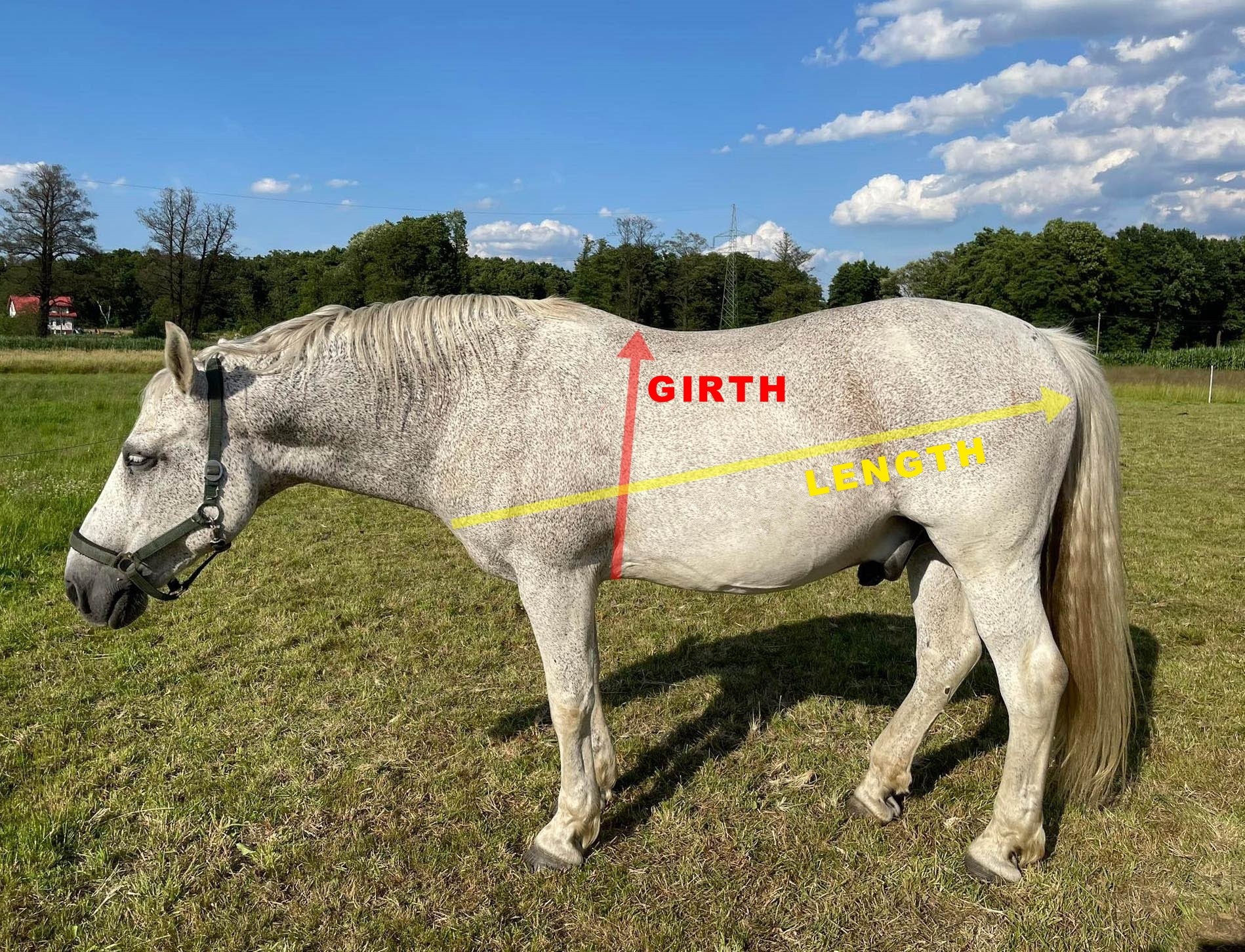
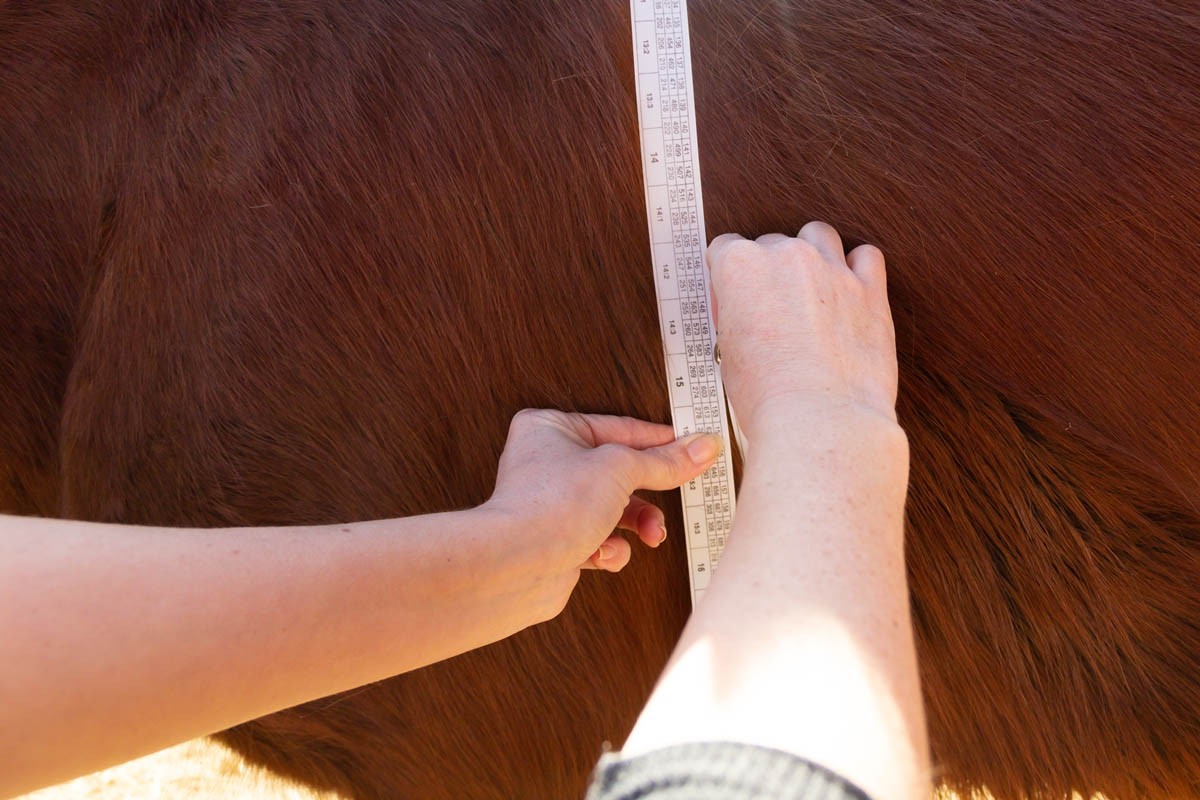
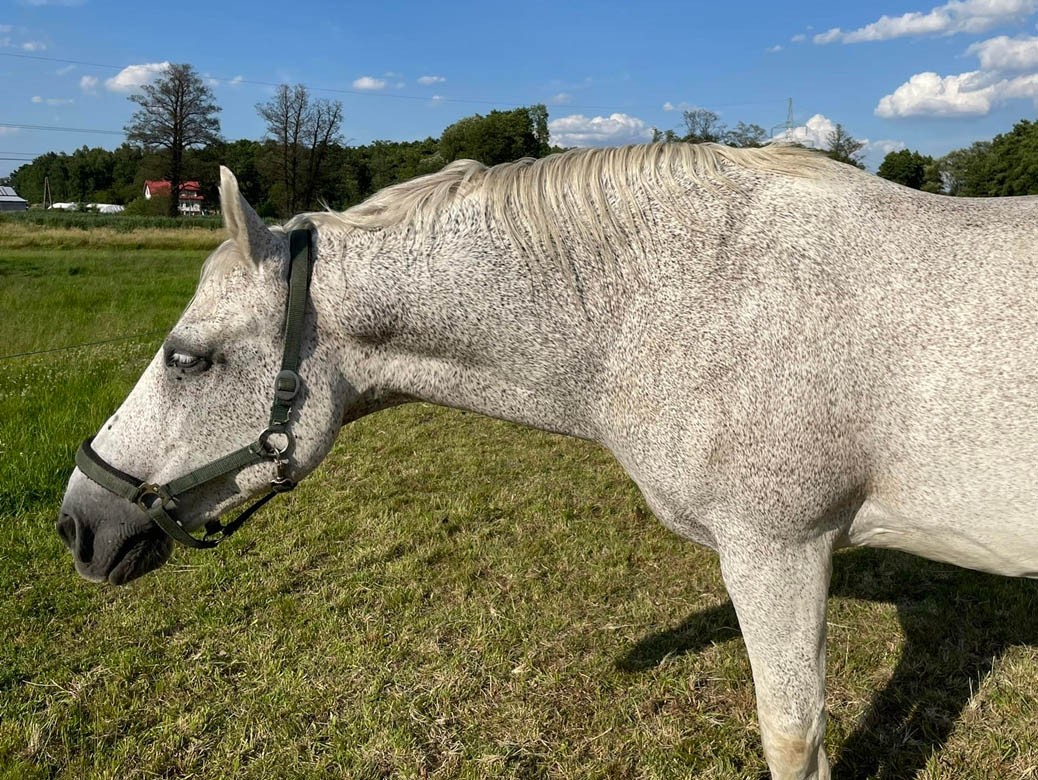
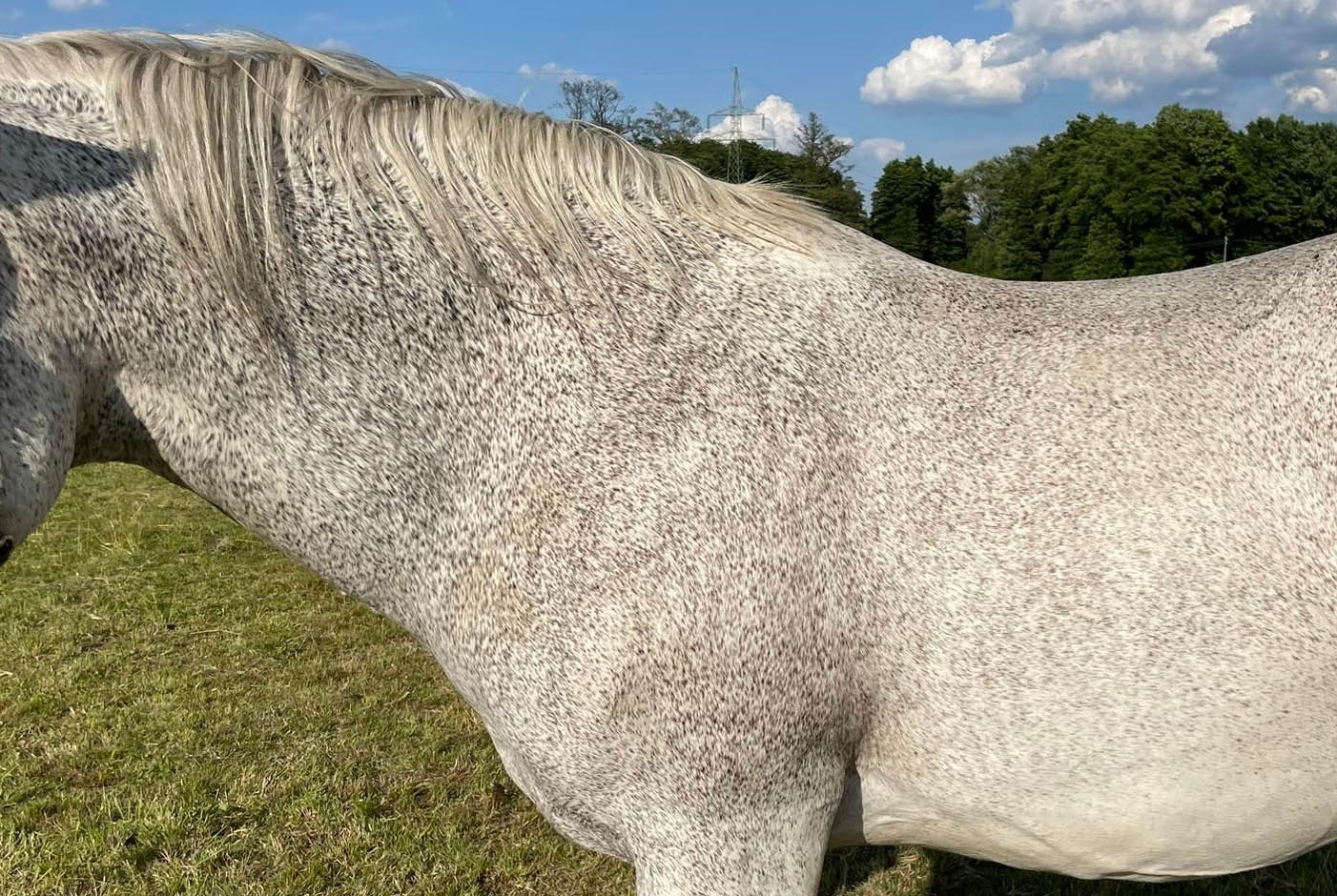
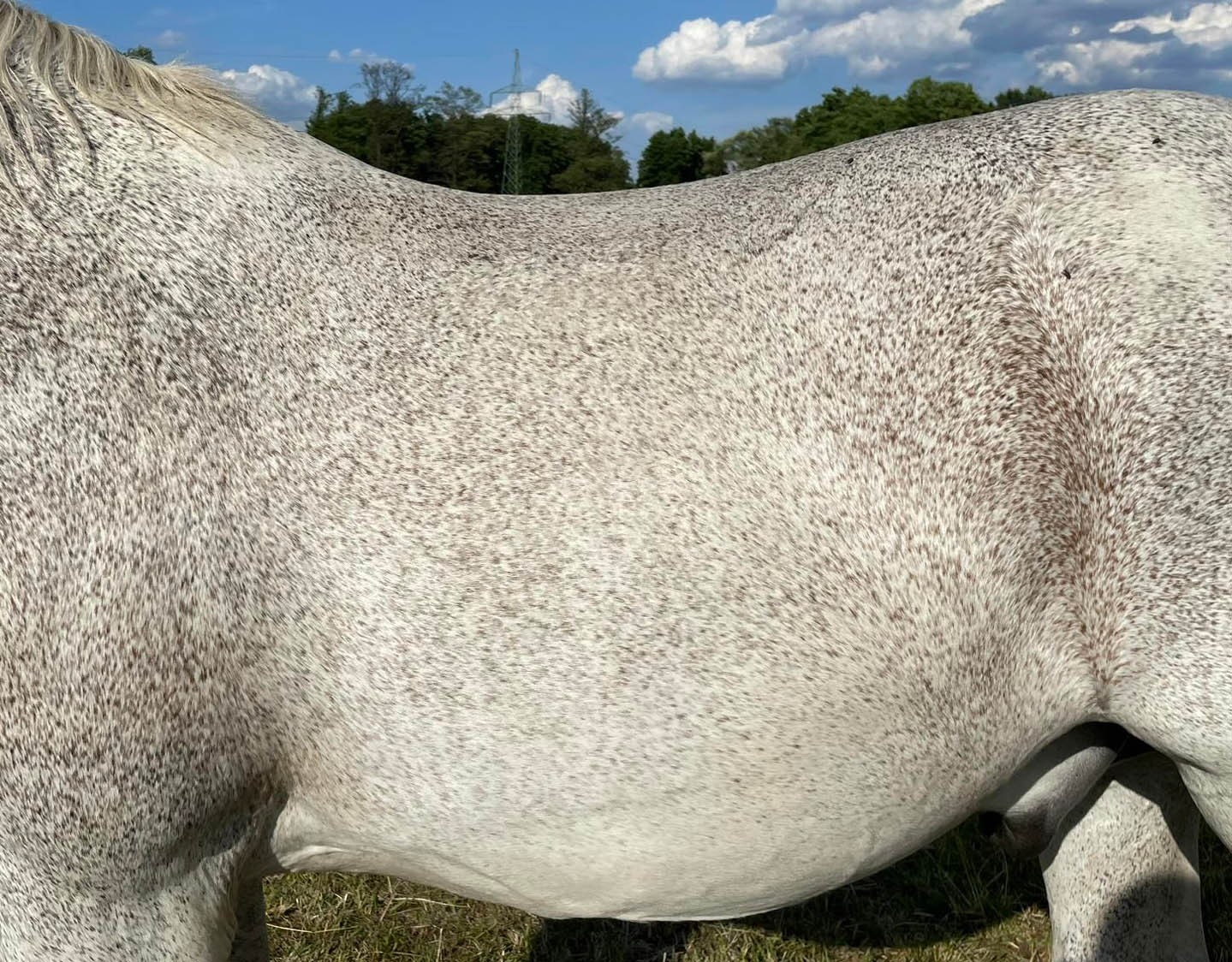
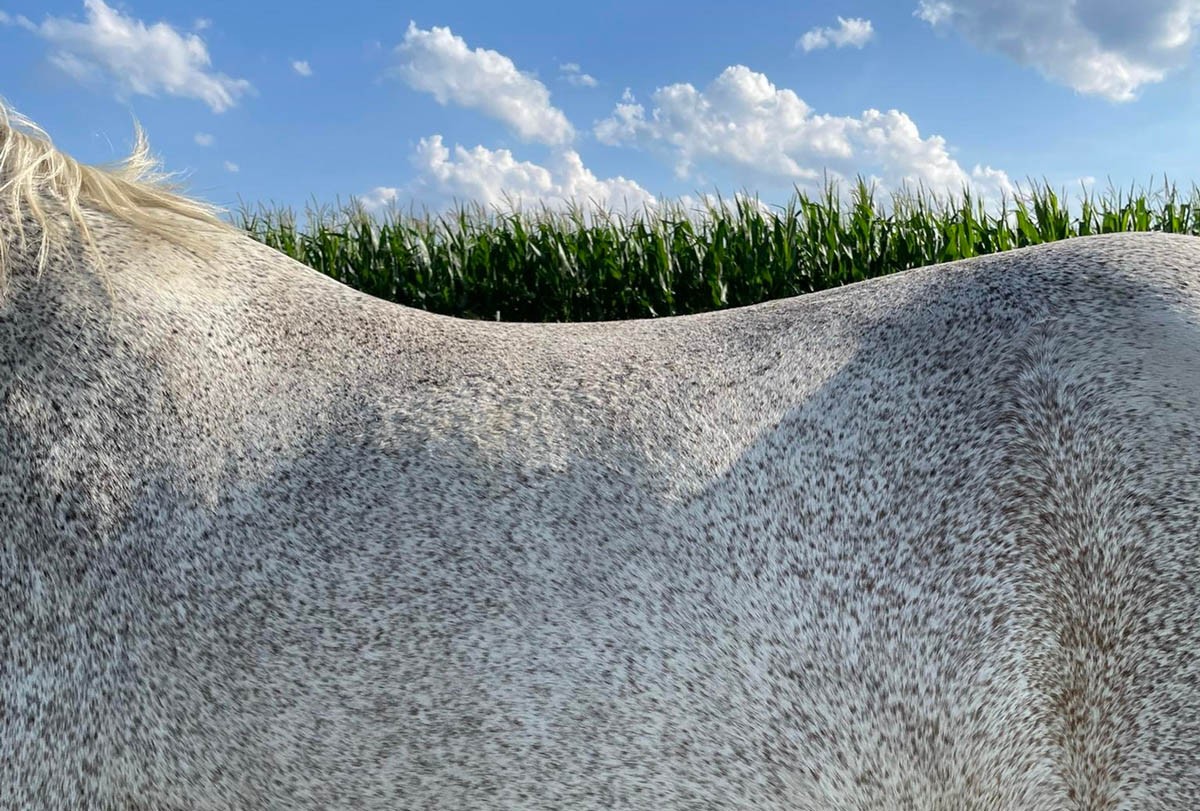
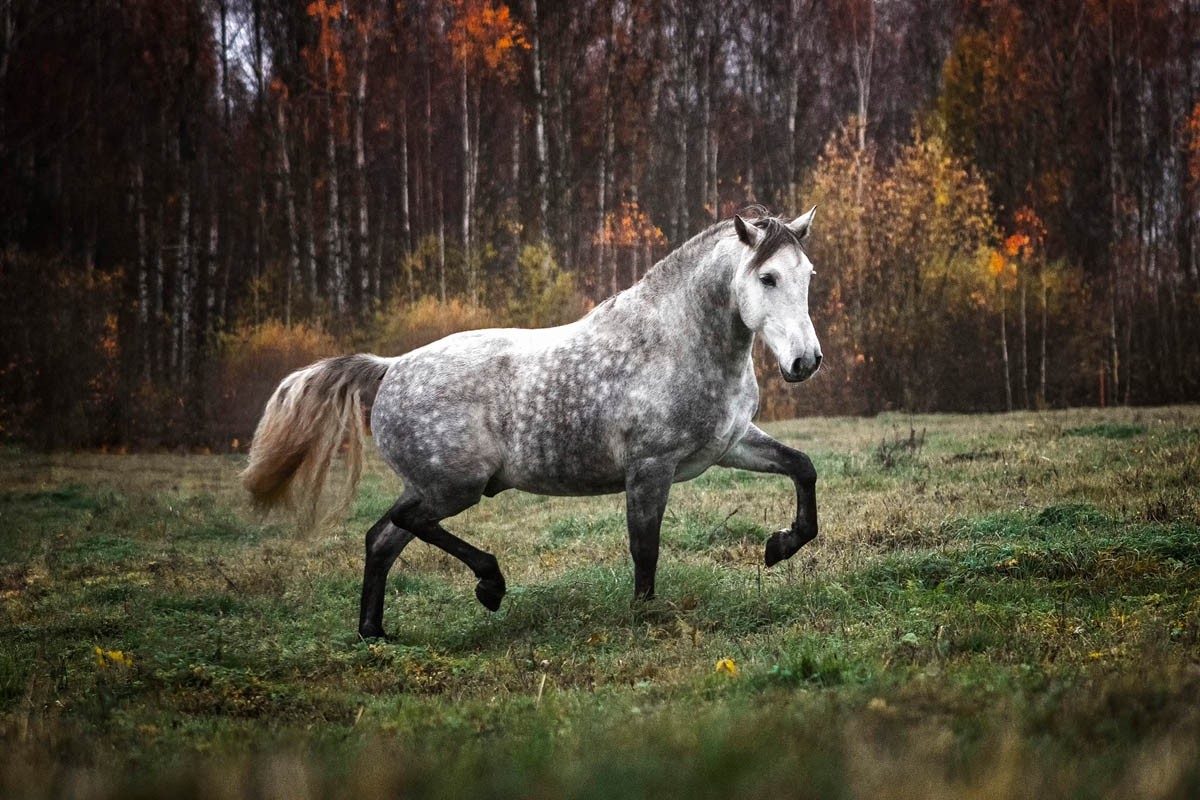
4. Weight Ranges by Horse Breed
The weight of a horse can vary significantly based on its breed. Below is a detailed table outlining the average body weights for various horse breeds, offering a more precise understanding of what to expect.
| Horse Breed | Average Weight (kg) | Average Weight (lbs) |
|---|---|---|
| Percheron | 850.5 – 950 | 1,876 – 2,094 |
| Belgian Draft Horse | 816.5 – 998 | 1,799 – 2,199 |
| Suffolk Punch | 751 – 900 | 1,653 – 1,984 |
| Shire | 701 – 1,200 | 1,545 – 2,645 |
| Ardennais | 701 – 1,000 | 1,545 – 2,204 |
| Clydesdale | 701 – 800.5 | 1,545 – 1,773 |
| Irish Draught | 599 – 800.5 | 1,318 – 1,773 |
| Gypsy | 590 – 726 | 1,298 – 1,600 |
| Heavyweight Hunter | 590 – 698.5 | 1,298 – 1,538 |
| Cleveland Bay | 549 – 701 | 1,209 – 1,545 |
| Hanoverian | 549 – 651 | 1,209 – 1,434 |
| American Warmblood | 549 – 599 | 1,209 – 1,318 |
| Dutch Warmblood | 549 – 599 | 1,209 – 1,318 |
| Oldenburger | 544 – 680.5 | 1,199 – 1,499 |
| Friesian | 544 – 635 | 1,199 – 1,400 |
| Danish Warmblood | 544 – 635 | 1,199 – 1,400 |
| Andalusian | 544 – 590 | 1,199 – 1,300 |
| Paso Fino | 544 – 590 | 1,199 – 1,300 |
| Trakehner | 499 – 680.5 | 1,199 – 1,300 |
| Middleweight Ridden Hunter | 499 – 635 | 1,099 – 1,399 |
| Wielkopolski | 499 – 635 | 1,099 – 1,399 |
| Highland Pony | 499 – 599 | 1,099 – 1,318 |
| American Saddlebred | 453.5 – 544.5 | 998 – 1,200 |
| Holsteiner | 449 – 800.5 | 989 – 1,764 |
| Westphalian | 449 – 599 | 989 – 1,318 |
| Lightweight Ridden Hunter | 449 – 590 | 989 – 1,300 |
| Thoroughbred Horse | 449 – 499 | 989 – 1,099 |
| Paint | 431 – 544.5 | 949 – 1,199 |
| American Quarter Horse | 431 – 544 | 949 – 1,199 |
| Hackney Horse | 410.5 – 544 | 903 – 1,199 |
| Lipizzaner | 410.5 – 544 | 903 – 1,199 |
| Nokota | 408 – 680 | 898 – 1,499 |
| Missouri Fox Trotter | 408 – 544 | 898 – 1,199 |
| Tennessee Walker | 408 – 544 | 898 – 1,199 |
| Lusitano | 408 – 499 | 898 – 1,199 |
| Morgan | 408 – 499 | 898 – 1,199 |
| Polo Pony | 408 – 499 | 879 – 1,199 |
| Swedish Warmblood | 399 – 549 | 879 – 1,209 |
| Hackney Pony | 399 – 549 | 879 – 1,209 |
| Dales Pony | 399 – 499 | 879 – 1,099 |
| Fjord | 399 – 499 | 879 – 1,099 |
| Arabian Horse | 360.5 – 449 | 794 – 990 |
| Haflinger | 349 – 599 | 769 – 1,318 |
| Fell Pony | 349 – 449 | 769 – 990 |
| Welara | 299 – 399 | 658 – 878 |
| Eriskay | 299 – 399 | 658 – 878 |
| Exmoor Pony | 299 – 399 | 658 – 878 |
| Connemara | 290 – 390 | 639 – 859 |
| Hackney Pony | 249.5 – 349 | 550 – 769 |
| New Forest | 231 – 331 | 509 – 729 |
| British Spotted Pony | 199.5 – 399 | 439 – 879 |
| Dartmoor | 199.5 – 320 | 439 – 705 |
| Shetland Pony | 181.5 – 199.5 | 400 – 439 |
5. Estimating Weight Based on Height
While not as precise as direct measurement, estimating weight based on height can offer a reasonable approximation. Here’s a table showing the relationship between height at the withers and weight.
| Height at Withers (cm) | Weight (kg) | Weight (lbs) |
|---|---|---|
| 91 | 190 – 240 | 418 – 529 |
| 101 | 240 – 280 | 529 – 617 |
| 111 | 240 – 318 | 529 – 700 |
| 121 | 240 – 370 | 529 – 837 |
| 131 | 280 – 399 | 617 – 879 |
| 141 | 360 – 449 | 794 – 990 |
| 151 | 399 – 550 | 879 – 1,212 |
| 161 | 469 – 701 | 1,034 – 1,545 |
| 171 | 551 – 800 | 1,215 – 1,763 |
| 181 | 700 – 1,040 | 1,543 – 2,293 |
6. Methods for Determining a Horse’s Weight
There are several methods available for determining a horse’s weight, ranging from simple tools to more complex calculations. Each method provides an estimate, so it’s beneficial to use a combination for a more accurate assessment.
6.1. Weight Tape
A weight tape is an inexpensive and convenient tool for estimating a horse’s weight. It measures the girth of the horse, and the tape is calibrated to provide an approximate weight based on this measurement.
6.2. Calculation Formulas
Various formulas can be used to estimate a horse’s weight using measurements of girth and body length.
6.2.1. Adult Horse Formula
The most common formula for adult horses is:
Weight (lbs) = (Girth in inches)² x Body Length in inches / 330
6.2.2. Pony Formula
For ponies, a slightly different divisor is used:
Weight (lbs) = (Girth in inches)² x Body Length in inches / 299
6.2.3. Yearling Formula
For yearlings, the formula is:
Weight (lbs) = (Girth in inches)² x Body Length in inches / 301
6.2.4. Weanling Formula
For weanlings, the formula is:
Weight (lbs) = (Girth in inches)² x Body Length in inches / 280
6.3. Sasimowski and Budzyński’s Formula
This method involves measuring the longitudinal circumference of the trunk and the girth of the chest, then applying a breed-specific factor.
The formula is: C = O x P x W
- O = Chest girth
- P = Longitudinal circumference of the body
- W = Breed index
Breed Index:
- Małopolski horse = 75
- Wielkopolski horse = 75
- Fjord = 72
- Silesian horse = 81
- Ardennais = 81
- Sztumski Polish Draft Horse = 82
- Thoroughbred = 70
- Arabian horse = 60
- Ponies = 60-63
- Average breed ratio = 75
If a breed doesn’t belong to any of the groups above, then you should use the average breed ratio.
6.4. Caroll and Huntington’s Method
This method is considered more precise and uses the following formula:
[Chest girth (cm)² x Length (cm)] / 11877
6.5. Weighbridge or Livestock Scale
The most accurate way to determine a horse’s weight is by using a weighbridge or livestock scale. These scales provide a precise measurement, but they may not always be readily accessible.
7. Body Condition Scoring (BCS) Method
The Body Condition Scoring (BCS) method, developed by Don Henneke, is a subjective assessment of a horse’s fat cover. It uses a scale from 1 to 9, where 1 indicates extreme emaciation and 9 indicates extreme obesity.
7.1. BCS Scale
- 1: Poor: Extremely emaciated; spine, ribs, tailhead, and hip bones are prominent.
- 2: Very Thin: Emaciated; slight fat covering over spine, ribs, and hip bones.
- 3: Thin: Ribs easily visible; spine and hip bones prominent.
- 4: Moderately Thin: Faint outline of ribs visible; spine and hip bones palpable.
- 5: Moderate: Ribs not visible but easily palpable; spine and hip bones rounded.
- 6: Moderate to Fleshy: Fat covering over ribs; spine and hip bones rounded and soft.
- 7: Fleshy: Ribs difficult to palpate; fat deposits along spine and tailhead.
- 8: Fat: Ribs very difficult to palpate; large fat deposits along spine, tailhead, and neck.
- 9: Extremely Fat: Obese; bulging fat deposits all over the body.
7.2. Assessing Different Body Parts
The BCS method focuses on assessing fat cover in key areas:
7.2.1. Neck and Withers
- 1-3: Bony structures visible; little to no fat cover.
- 4-6: Moderate fat cover; neck blends smoothly into the body.
- 7-9: Significant fat deposits; neck crest enlarged.
7.2.2. Shoulder
- 1-3: Shoulder bones easily noticeable; little to no fat.
- 4-6: Shoulder barely visible; slight fat covering.
- 7-9: Significant fat deposits; shoulder area visibly filled.
7.2.3. Ribs
- 1-3: Ribs sticking out; little to no fat cover.
- 4-6: Ribs not visible but easily palpable; moderate fat cover.
- 7-9: Ribs difficult to palpate; significant fat deposits.
7.2.4. Back
- 1-3: Spine prominent; little to no fat cover.
- 4-6: Back slightly built; moderate fat cover.
- 7-9: Fat crease along spine; significant fat deposits.
7.2.5. Tailhead Area
- 1-3: Tailhead, hip, and buttock points prominent; little to no fat.
- 4-6: Tailhead covered with soft fat tissue; tail dock palpable.
- 7-9: Significant fat deposits; tail dock enlarged.
8. Managing Underweight Horses
If a horse is underweight, it’s essential to identify the underlying cause and address it promptly. Common causes include inadequate nutrition, dental issues, parasites, or underlying health conditions.
8.1. Increasing Caloric Intake
Gradually increase the horse’s feed ration, focusing on high-quality forage and concentrate feeds.
8.2. Addressing Dental Issues
Ensure the horse has regular dental check-ups to address any issues that may be hindering their ability to chew and digest food properly.
8.3. Deworming
Implement a regular deworming program to eliminate parasites that may be preventing the horse from absorbing nutrients effectively.
8.4. Consulting a Veterinarian
Consult with a veterinarian to rule out any underlying health conditions that may be contributing to weight loss.
9. Managing Overweight Horses
Overweight horses are at risk of developing various health problems, including laminitis, arthritis, and metabolic disorders. Weight management is crucial for their long-term health and well-being.
9.1. Reducing Caloric Intake
Gradually reduce the horse’s feed ration, focusing on low-calorie forage and limiting access to concentrate feeds.
9.2. Increasing Exercise
Increase the horse’s exercise level to burn more calories and promote weight loss.
9.3. Using a Grazing Muzzle
Consider using a grazing muzzle to limit the horse’s access to pasture grass, which can be high in calories.
9.4. Consulting an Equine Nutritionist
Consult with an equine nutritionist to develop a balanced diet and exercise plan tailored to the horse’s specific needs.
10. Rider’s Weight and Horse’s Capacity
The rider’s weight should be proportional to the horse’s weight to avoid causing discomfort or injury. As a general guideline, the rider’s weight should not exceed 15% of the horse’s weight.
10.1. Choosing the Right Horse
Riders with a larger body weight should choose horses that are capable of carrying more weight, such as draft breeds or larger warmbloods.
10.2. Assessing Horse’s Fitness
Ensure the horse is in good physical condition and has adequate muscle mass to carry the rider’s weight comfortably.
10.3. Monitoring Horse’s Response
Pay attention to the horse’s behavior and movement while being ridden. Signs of discomfort or reluctance to move forward may indicate that the rider’s weight is too heavy.
11. Record-Breaking Horse Weights
Interesting facts about the extremes in horse weights provide a broader perspective on the diversity within the species.
11.1. Smallest Horse
The Guinness World Record for the smallest horse was held by Bombel, a miniature horse weighing only 132 lbs (60 kg) and standing 22.3 inches (56.7 cm) tall.
11.2. Heaviest Horse
The heaviest horse on record was Sampson, a Shire horse born in 1846, who weighed 3,360 lbs (1,524 kg) and stood 7 feet 2 inches (219 cm) tall.
12. How HOW.EDU.VN Can Help You?
Navigating the complexities of horse care, from weight management to specialized training, can be challenging. HOW.EDU.VN connects you with a network of over 100 Ph.D. experts ready to provide personalized guidance and solutions. Whether you need a tailored nutritional plan, advice on addressing health concerns, or strategies for optimizing your horse’s performance, our experts offer the insights you need.
12.1. Access to Expert Advice
Connect with leading equine nutritionists and veterinarians for personalized advice.
12.2. Tailored Solutions
Receive customized management plans for your horse’s specific needs.
12.3. Convenient Consultation
Get your questions answered quickly and efficiently through our user-friendly platform.
13. FAQs About Horse Weight
13.1. How much does a newborn foal typically weigh?
A newborn foal typically weighs around 10% of its mother’s weight.
13.2. How can I accurately estimate my horse’s weight without a scale?
Use a weight tape in conjunction with calculation formulas for a more accurate estimation.
13.3. What is the ideal BCS for a performance horse?
The ideal BCS for a performance horse is typically between 4 and 6.
13.4. How often should I check my horse’s weight?
You should check your horse’s weight at least once a month, or more frequently if they are undergoing a weight management program.
13.5. What are the risks of an overweight horse?
Overweight horses are at risk of developing laminitis, arthritis, metabolic disorders, and heart problems.
13.6. How can I help my underweight horse gain weight safely?
Increase caloric intake gradually, address dental issues, implement a deworming program, and consult with a veterinarian.
13.7. Is there a correlation between horse height and weight?
Yes, generally taller horses weigh more, but this can vary based on breed and muscle mass.
13.8. What is the best way to determine if my horse is at a healthy weight?
Use a combination of methods, including weight tape measurements, calculation formulas, and body condition scoring.
13.9. How does a rider’s weight affect the horse’s health?
A rider’s weight that exceeds 15% of the horse’s weight can lead to spine, joint, and muscle disorders, as well as lower quality of movement.
13.10. When should I consult an equine nutritionist?
Consult an equine nutritionist when you need a balanced diet and exercise plan tailored to your horse’s specific needs, especially if the horse is underweight or overweight.
Conclusion
Understanding how much a horse weighs and the factors influencing their weight is essential for responsible horse ownership. By using the methods and guidelines outlined in this article, you can effectively monitor your horse’s weight and ensure their overall health and well-being. For personalized advice and expert guidance, reach out to the Ph.D. experts at HOW.EDU.VN, who are ready to assist you with all your equine care needs.
Is your horse’s weight a concern? Do you need expert advice on nutrition, exercise, or health management? Contact HOW.EDU.VN today! Our team of over 100 Ph.D. experts is ready to provide personalized solutions to help you ensure the health and happiness of your equine companion.
Address: 456 Expertise Plaza, Consult City, CA 90210, United States
WhatsApp: +1 (310) 555-1212
Website: how.edu.vn